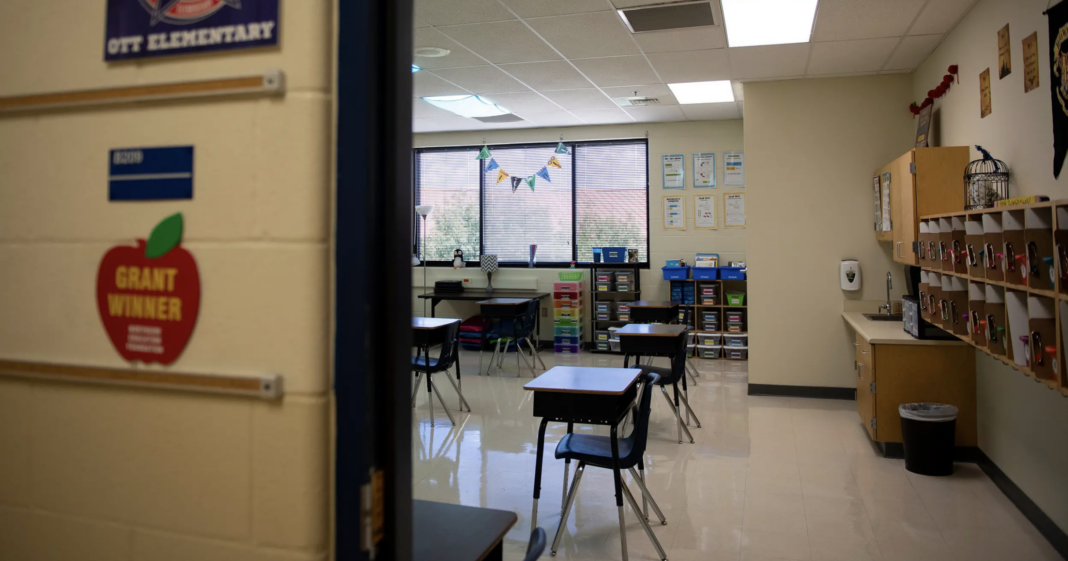A state-backed program that for decades has helped school districts get the lowest interest rates possible on bonds is about to reach its limit — and if it does, districts might find themselves having to ask for more money from taxpayers.
The Permanent School Fund is a state endowment of about $56 billion funded through investments and land holdings. It was created in 1854 to give Texas’ public schools another form of revenue other than tax dollars. Through its bond guarantee program, when a school district passes a bond package, the PSF promises lenders who buy the bonds that the state will pay them back if the school district can’t. Having the PSF as a guarantor helps school districts get the best interest rates on those bonds.
But the PSF’s guarantee program has a limit on how much debt it can cover at any given time. The IRS, which has jurisdiction over tax-exempt municipal bonds, has set that limit at about $117 billion. As of Oct. 31, the program only has about $652.6 million left in capacity before the program shuts down, according to the latest state projections. That’s down from $3 billion at the end of September.
“It wouldn’t surprise me to see that run out within the next month or two,” said Amanda Brownson, executive director of policy and research at the Texas Association of School Business Officials.
Carolyn Perez, director of communications with the Texas Permanent School Fund, said the TEA has been in conversations with the IRS about increasing the limit, but no decision has yet been made. The IRS said it could not comment on whether it was planning to extend the limit of the PSF’s bond program.
In Congress, Reps. Lloyd Doggett, D-Austin, and Jodey C. Arrington, R-Lubbock, have filed House Resolution 9044, which would stop the IRS from setting a limit at all.
“The focus here is to keep financing costs at a minimum and investments in our schools at a maximum,” Doggett said. “We need action soon.”
The program previously reached its limit in 2009 as the state’s growing population and student enrollment led schools to issue more bonds for renewing decade-old buildings and erecting new ones, said Brian Woods, superintendent of the Northside Independent School District.
The IRS updated the program’s debt limit later that year, but not before school districts were forced to pay higher interest rates on their bond debt for a couple of months, Brownson said.
Despite that extension 13 years ago, the program finds itself near the brink once more. Bobby Ott, superintendent of Temple ISD, said bond packages have gotten bigger and more expensive since 2009 because construction costs keep going up and because district leaders prefer to get multiple projects passed in one package so as not to have to go back and ask taxpayers for more.
With voters across the state approving new bonds in the May and November elections, the program’s limit could be reached soon. Although those bonds have already been approved, they aren’t guaranteed by the PSF’s program until they’re sold — and school districts often wait to find a lender until they’re ready to build.
In Austin ISD alone, voters approved a $2.44 billion bond package to update infrastructure across several campuses throughout the district.
In Northside ISD, the state’s fourth-largest school district, based in San Antonio, voters approved a bond package worth nearly $1 billion to renovate and build new schools. Woods said the district has sold only a portion of those bonds.
The situation spells trouble for districts as bond packages have become a tough sell in recent years.
With districts across the state facing outcry from some parents over pandemic response measures and how race and history are taught in schools, some voters have expressed their discontent by striking down bond packages on the ballot. In November, Matt Rinaldi, chair of the Republican Party of Texas, tweeted that people should vote “no” on any bond.
Rising property taxes and costs for essential goods also have Texans thinking twice about voting for bonds that could potentially make their taxes go up.
Ronald Wilson, the chief financial officer for Hearne ISD, north of College Station, worries that if the PSF’s program reaches its limit again and school districts have to pay higher interest rates, bonds for new construction projects will become even less palatable.
“If you’re talking about having to ask your taxpayers for more money, it can make any bond issue just a little harder to pass,” he said.
In Temple ISD, about an hour north of Austin, Ott said the issue is that districts often pass bond packages promising not to raise taxes, and if the PSF’s program reaches its limit, there’s a possibility that they’ll have to go back on such promises, losing the community’s trust in the process and making it harder to pass future bond packages.
In May, Temple ISD voters passed a $164.8 million bond package to renovate schools and build a new campus. Ott said the district has sold about $100 million of the bonds to start the bigger projects.
If the program’s limit is exceeded and the district has to sell the rest without the PSF’s guarantee, he said he’d have to sit down with his financial officer to see what options are best to keep the cost for taxpayers low.
Wilson, the Hearne chief financial officer, said that if the IRS doesn’t increase the limit, some renovations could stall. Districts would hesitate to propose new bond packages or would postpone selling bonds that have already been approved out of fear of having to raise taxes.
“Anytime your costs are up, you have to look at what your taxpayers are willing to bear, and, you know, it could mean you trim some of your needs,” he said.
Disclosure: The Texas Association of School Business Officials has been a financial supporter of The Texas Tribune, a nonprofit, nonpartisan news organization that is funded in part by donations from members, foundations and corporate sponsors. Financial supporters play no role in the Tribune’s journalism. Find a complete list of them here.
This story originally appeared on the Texas Tribune. To read this article in its original format, click here.








